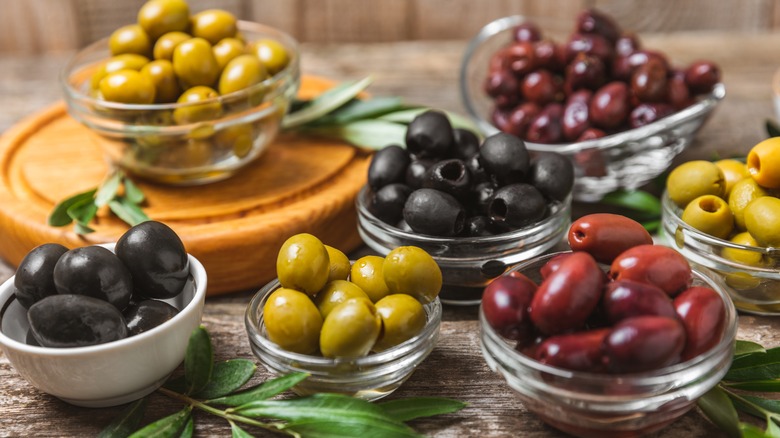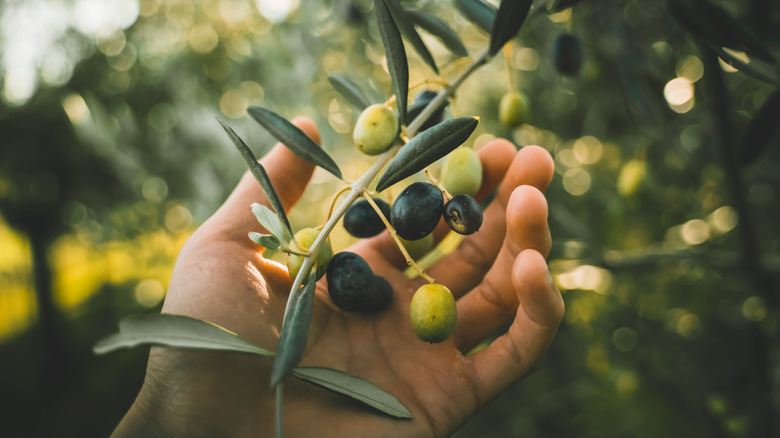Kalamata Aren't The Only Black Olives That Deserve Your Love
Foodies have so much to love about olives. They're versatile, nutritious, and available in diverse varieties packed with intense flavor. There's no doubt that the briny, meaty kalamata olive is among the most popular, especially for cuisine with roots in the Mediterranean and the Middle East. But olive lovers shouldn't limit their affection to this old standby — plenty of other black olives deserve a place on their plates, too.
It's essential to clear up one aspect of olives by addressing whether there truly is a difference between green and black olives. In many cases, black olives are simply the fully ripened version of green olives. Some olives are best consumed at a particular stage of ripeness, while others are available in both green and black versions, each with different flavor profiles.
From France, there's the tiny Niçoise olive, the soft, slightly bitter, slightly sweet, herbal variety that's left to ripen on the tree until dark black. This variety is most famous for its namesake salad, which pairs it with a mix of tuna, hardboiled egg, potatoes, and a vinaigrette dressing. The nation is also the home of Nyon olives, known for their intense, earthy bitterness. They're often served in oil and sprinkled with herbs.
More black olive options
Italy is also another producer of delicious, less common black olives. Gaeta olives share some similarities in appearance and texture with Kalamatas, though with a more bitter, buttery, and citrus-inflected flavor. Don't forget the distinctive Ligurian or Taggiasca olives, different names for the same olive that shares many similarities to the Niçoise since it's grown nearby.
Of course, you can't talk about black olives without mentioning the familiar California Black Olives, which you may recognize on frozen pizzas and restaurant salad bars. They're relatively mild olives with a more neutral flavor from elements of salt, bitterness, and nuttiness. While they may not have the high-end appeal of other varieties, they're no doubt an affordable workhorse in many kitchens.
These are just a handful of the many varieties available around the world that have become an important part of global cuisine. Generally, experts recommend buying olives with the pit still inside, as this protects the delicate interior flesh from becoming mushy or overly salty in the brine or curing mix.
So, the next time you're craving olives, branch out from the Kalamatas and show some love to the many diverse varieties of olives ready to dazzle your tastebuds.

